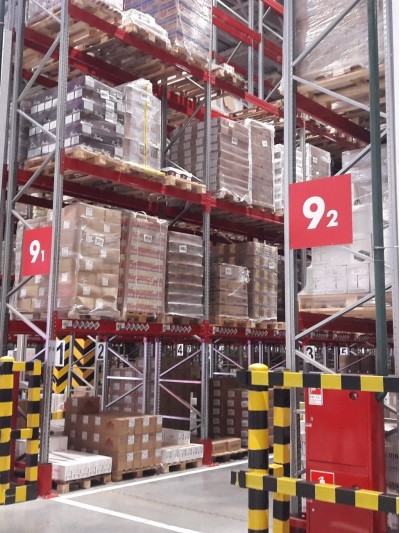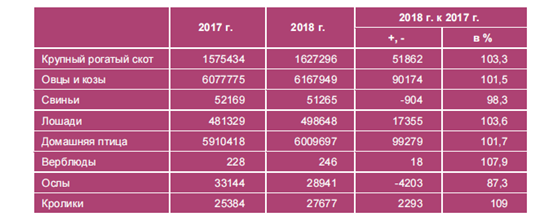
Annotation: In 2015, the Government's Plan for the Development of Export of the Kyrgyz Republic for 2015-2017 was approved in Kyrgyzstan. This Plan has prioritized all traditional agri-food exports (dairy products, fresh and processed vegetables, fruits and nuts, wool and animal skins, cotton), as well as meat products and bottled water. The EAEU countries, the EU and China are considered as priority directions of supplies.
Keywords: meat products, export, markets, foreign markets, logistics
The construction of livestock facilities for the production, processing of meat and the production of high-quality beef and lamb is underway in the republic, but not enough to fully provide the population with high-quality meat and meat products, as well as export abroad.
According to the Association "KygyzEt", the meat industry of Kyrgyzstan is located in deplorable condition. The most pressing problems in the meat industry at today there is a lack of modern slaughterhouses and meat processing plants that meet the EAEU standards. This leads to a low export potential of the industry, significant loss of profits for farmers and in general country due to loss of added value. Also, the insufficient number of veterinary and test laboratories and their insufficient staffing, the complete absence of modern logistics centers lead to large losses of profits.
According to the estimates of the "KygyzEt" Association, to address these issues in the republic, it is necessary to build 40 modern slaughterhouses. Each district has one workshop with a capacity of 10 heads of cattle and 50 heads of small cattle per shift. We also need 10 mini-meat processing plants with a processing capacity of 3000 kg of meat per shift. The meat processing plants are planned to be located in large cities of the country. We also need 7 modern trade and logistics centers for meat, which will be located in the cities: Bishkek, Balykchy, Batken, Kyzyl-Kiya. It also requires 32 veterinary laboratories.
Kyrgyzstan has developed successful international cooperation with Iran, since in July 2016 two representatives of the Iranian Veterinary Service arrived in Bishkek to take a number of restrictive medical and administrative measures aimed at preventing the spread of infectious diseases. As a result, Kyrgyzstan managed to export sheep meat to Iran. The country plans to continue and even increase its exports to Iran.
Large unused reserves for increasing the production of meat of all types are available in small-scale production, where modernization is proceeding very slowly.
Given the growth in the number of livestock and new requirements in the EAEU, the issue of organizing the slaughter of livestock in accordance with the requirements of the Technical Regulations of the Customs Union TR CU 034/2013 "On the Safety of Meat and Meat Products" arises.
The lack of sufficient own financial resources and government support hinders the rapid development of meat production and processing in the republic, including the construction of meat reproductive farms, feedlots, slaughtering and processing workshops.
According to the Program of statistical works for 2018 "On carrying out in the territory of the Kyrgyz Republic the recount of livestock and poultry at the end of 2018" local authorities carried out a complete recount of livestock and poultry. The number of livestock and poultry kept in state and collective farms, subsidiary farms of enterprises and organizations, peasant (farm) farms, farms of individual entrepreneurs engaged in agricultural production and personal subsidiary farms of citizens was subject to registration.
The recalculation of livestock and poultry shows that the tendency for the growth of the number of main types of farm animals remains in the republic (Table 1).
Livestock and poultry population in Kyrgyzstan (in farms of all categories, at the end of the year, heads)

109 The largest share of the cattle livestock is kept in the farms of Osh (22.5% of the total livestock), Jalal-Abad (20.3%), Chui (17.8%) and Issyk-Kul (14.6%) regions, sheep and goats - in the farms of Jalal-Abad (21.2%), Osh (18.5%), Naryn (17.3%) and Issyk-Kul (14.9%) regions, horses - in the farms of Naryn (23 , 9%), Issyk-Kul (21.2%), Osh (19.3%), Jalal-Abad (14.3%) and Chui (14.1%) regions At the end of 2018, in all categories of farms in the republic, compared to the corresponding period of 2017, there was an increase in the number of main types of livestock. However, the number of cattle in state and collective farms, in comparison with the corresponding period of 2017, on the contrary, decreased by 350 heads or 3.0 percent.
At the same time, the main problems in organizing slaughterhouses are: a low level of integrated integration into a single technological complex of meat producers, feed mills industry, slaughterhouses, meat processing and retail chains; remoteness of places where livestock are kept from slaughterhouses and refrigerators; insufficient level of infrastructure (logistics) development of the meat market.
Diversification of livestock processing production allows enterprises to adapt to the rapidly changing conditions in the meat market, to increase the competitiveness of manufactured products to fill the food market with meat products of their own production to a level that ensures food security.
Logistics centers only deal with products supplied under a contract. Logistics centers can only serve those farmers who can meet the specific requirements set by them.
This means that farmers intending to use the services provided by the logistics center must adapt to the services provided by the logistics center. Requirements cover minimum lot size, minimum product quality, submission of required documentation. Therefore, farmers should be trained and farming groups should be encouraged.
In some cases, facilities, in particular a warehouse built during the Soviet era, could be used as the basis for a modern local logistics center. This has a fundamental value, to determine the destination of products collected by the local logistics center, the main function of which will be the collection and storage of meat products.
In all of the above cases, the private sector must play a central role, including in investment, planning, construction and operation. Government and the academic community will play a role where private sectors are limited, for example:
- in the provision of land plots,
- in promoting investments,
- in a group of farmers,
- in providing technical support.
The creation of a model of a logistics center for the export of meat (local logistics center) should be through the coordination of existing projects of private companies to accumulate experience in the logistics center and exchange of experience with others. This logistics center model should have collection, storage and transport functions, and will also be used as a model for developing a strategy for integrating other functions such as sorting, handling, packaging and testing (certificate). In addition, it is recommended that this model should be used to train farmers who are users of the logistics center in order to form farming groups to facilitate the operation of the logistics center. International donor organizations could cooperate in training, while a private company could be responsible for running a model logistics center. It is assumed that the experience gained during the operation of the model logistics center will also be useful for the operation of the international logistics center, since the model logistics center could expand into an international logistics center in the future.
List of references
1. A summary review of measures and mechanisms to support the export of agricultural products and food used in the member states of the Eurasian Economic union and leading exporting countries of agricultural products and food. Department of agro-industrial policy of the EEC. - Moscow, 2016.
2. Brink L. Countries of the CIS and the WTO: issues of agricultural policy and government support. - Rome, FAO, 2014.
3. Analysis of the possibilities of promoting jointly produced industrial products of the Member States for export in priority industries. EEC Industrial Policy Department. Moscow, 2017.
4. Serova E.V. Features of the situation with food security in Central Asian countries, main problems and consequences. Overview of trade policies in Europe and Central Asia. FAO Bulletin. - No. 20. - December, 2016.
4. FAO. Review of Agri-Food Trade Policy in Post-Soviet Countries 2016-2017 - Rome, 2018.